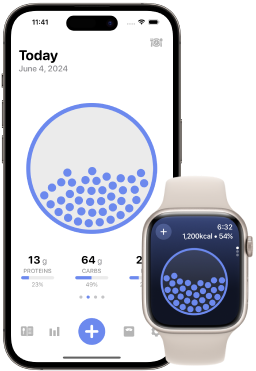
Food Swaps for Budget-Friendly Options in Your Pantry
With prices climbing across grocery store aisles, here’s how to stay well-fed without breaking the bank.
If you’ve found yourself wincing at your grocery bill lately, you’re not alone. Whether it’s the eggs you crack into your morning scramble or the sweet drizzle of maple syrup on weekend pancakes, everyday staples are becoming noticeably more expensive. Rising production costs, climate change, supply chain issues, and global demand shifts are all fueling food price hikes, and many household favorites are not immune.
But here’s the good news: eating well doesn’t always have to come with a premium price tag. With a little know-how and a willingness to try new things, there are affordable swaps for almost every pricey pantry item. In this article, we’ll explore five foods expected to cost more in 2025, maple syrup, eggs, sugar and sweets, beef, and fresh berries, and offer budget-friendly alternatives that won’t compromise on nutrition or flavor.
1. Maple Syrup
Maple syrup, a beloved natural sweetener, is becoming increasingly expensive due to erratic weather patterns that affect sap production. Most maple syrup comes from Canada and the northeastern U.S., and warm winters or shorter tapping seasons have reduced supply. Additionally, higher labor and packaging costs are being passed down to consumers.
Budget-Friendly Swaps:

Honey: While not always cheaper, local or store-brand honey can be more cost-effective per serving and offers similar sweetness and versatility.
Molasses: This thick syrup is rich in flavor, packed with minerals, and often less expensive. It works well in baked goods and marinades.
Agave Nectar: A plant-based liquid sweetener with a lower glycemic index than sugar. It’s ideal for drizzling or blending into beverages.
DIY Fruit Syrups: Simmer frozen fruits with a little water and sweetener to create a delicious topping for pancakes, oatmeal, or yogurt.
Pro Tip: Buy larger containers or in bulk if you find a good deal on sweeteners. They last long and offer better value per ounce.
2. Fresh Berries
Fresh berries, blueberries, strawberries, and raspberries are delicate fruits with short shelf lives and labor-intensive harvesting. While it is not easily available in all suitable weather, climate change, drought, and transportation issues have all driven up prices, especially outside of their peak season.
Budget-Friendly Swaps:

Frozen Berries: Often picked and frozen at peak ripeness, they’re just as nutritious and usually more affordable.
Seasonal Fruits: Apples, bananas, or oranges tend to be cheaper year-round and can offer variety without the premium.
Homemade Berry Spreads: Simmer frozen berries with a bit of lemon and honey to create jams or compotes.
Bulk Purchases in Season: When fresh berries are in season, buy in bulk and freeze them at home to use later in smoothies, oatmeal, or desserts.
Pro Tip: Mix berries with lower-cost fruits to stretch them in fruit salads or parfaits.
3. Eggs
Egg prices have been on a rollercoaster ride, largely due to outbreaks of avian flu, increased feed costs, and changes in farming regulations requiring better animal welfare standards. These factors have limited supply and driven up costs — a frustrating change for anyone who relies on eggs as a staple protein.
Budget-Friendly Swaps:

Chia or Flax Eggs: Great for baking, these plant-based substitutes are made by mixing 1 tablespoon of chia or ground flaxseed with 3 tablespoons of water. They bind ingredients just like eggs.
Tofu: A versatile protein, tofu can mimic scrambled eggs or be used in replacement of cottage cheese. Filled with high protein, tofu can also be a good replacement of protein for vegan
Canned Beans: For savory dishes, beans add texture and protein at a fraction of the cost.
Yogurt or Mashed Banana: For sweet recipes, these ingredients can replace eggs in muffins, cakes, and pancakes.
4. Sugar and Sweets
Why They’re Increasing in Price:
From global sugar shortages to rising costs of raw ingredients and shipping, your favorite sweets and baked goods may come with a higher price tag. Additionally, increased demand for processed snacks during inflationary times has put pressure on manufacturers.Budget-Friendly Swaps:

Homemade Treats: Skip pre-packaged cookies and cakes and bake at home using pantry basics. You’ll get more servings for less money.
Natural Sweeteners: Use bananas, applesauce, or dates to sweeten desserts. These are often more nutritious and affordable in the long run.
Popcorn: Instead of sugary snacks, air-popped popcorn is a cheap and satisfying treat that you can season to your taste.
Dark Chocolate Chips: Buy in bulk and melt a few for desserts — it stretches farther than candy bars and can satisfy your sweet tooth.
Pro Tip: Reduce sugar gradually in recipes; you’ll retrain your palate and save on sweetener costs.
5. Beef
Beef is particularly vulnerable to price increases due to its long production cycle and high resource needs. Drought conditions affecting cattle feed, higher transportation expenses, and consumer demand have all contributed to rising meat prices.Budget-Friendly Swaps:

Ground Turkey or Chicken: These lean proteins are often cheaper than beef and work well in tacos, burgers, and meatballs.
Lentils: Perfect for soups, stews, and veggie burgers, lentils are protein-rich and very affordable.
Mushrooms: Their meaty texture makes them a popular meat substitute. Try blending them with ground meat to stretch your recipe.
Tofu: Ideal for stir-fries and skewers, these plant-based proteins are budget-friendly and absorb flavors beautifully.
